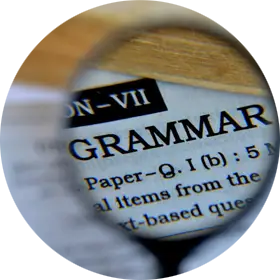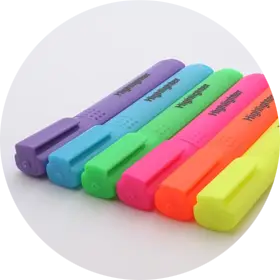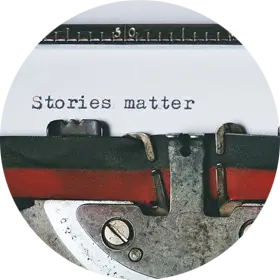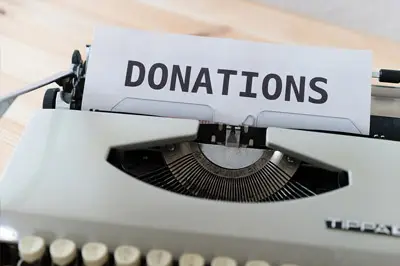The Definitive Guide to Effective Fundraising Letters
Includes Free Letter Templates
 Creating powerful and effective fundraising letters can be key to successful nonprofit fundraising campaigns. On the other hand, it can be difficult to get the formula just right. How do you make a strong ask without being too pushy? How do you word supporter letters correctly to engage donors, sponsors, or volunteers? What’s the best way to send letters to donors? If you’re stuck asking yourself any of these questions, you’ve come to the right place!
Creating powerful and effective fundraising letters can be key to successful nonprofit fundraising campaigns. On the other hand, it can be difficult to get the formula just right. How do you make a strong ask without being too pushy? How do you word supporter letters correctly to engage donors, sponsors, or volunteers? What’s the best way to send letters to donors? If you’re stuck asking yourself any of these questions, you’ve come to the right place!
We’ve put together a complete guide on which fundraising letters you need for every occasion. You’ll also find templates, sample fundraising letters, and pro tips on how to write each letter to drive campaign success and maximize funds for your charity or nonprofit.
Here’s what we’ll cover:
What Exactly Are Fundraising Letters?
Nonprofit fundraising letters are a great way to get people excited about your cause and rally supporters for donations. They tell the story of your organization, what it’s doing to raise money for a cause, and get people interested in making an impact on the world.
There are many different types of fundraising letters, but the most popular ones we’ll cover here are:
- Donation Request Letters
- Sponsorship Letters
- Matching Gift Fundraising Emails and Letters
- Prize Donation Request Letters
- In-Kind Donation Request Letters
- Corporate Donation Request Letters
- Annual Fund Letters
- Crowdfunding Letters
- End of Year Fundraising Letters
- Church Fundraising Letters
- Thank You and Appreciation Letters

Benefits of Sending Fundraising Letters

Fundraising letters are an invaluable tool for your nonprofit’s charity campaigns. So why are they so important?
Some of the great benefits include the following:
- Being a vehicle to boost engagement with supporters
- Providing an opportunity to highlight your nonprofit’s mission
- Driving donations and achieving fundraising goals
- Adding a personal touch to your campaign
- Expanding your nonprofit’s outreach
- Gaining new constituents and strengthening relationships with existing ones
General Tips on How to Write a Killer Fundraising Letter
Although every fundraising letter is specific to its cause and recipient, they all must follow simple guidelines. If you’re unsure where and how to start writing, here’s a great place to begin. Make sure your fundraising letters follow these guidelines.

Always Be Personal
Make sure to personally address your fundraising letters to your donors. This adds an individual touch that your reader will appreciate. Remember, you don’t want your letters coming across as mass-produced generic fundraising letters that are easily ignored.

Write Clearly and Correctly
Double-check grammar, spelling, and punctuation. You don’t want your donors correcting poorly written mistakes and being put off by your lack of attention to detail. Be sure to utilize white space by using bullet points and no long paragraphs. Call out important information with bold fonts.

Engage from the Get-Go
Asking questions is an effective tool to grab your reader’s interest. For example, “Have you ever thought about how many people in our city go hungry each year at Christmas?” Follow this up with an impactful statistic and state how your donor can help solve the problem.

Be Polite
You mustn’t forget your manners when writing fundraising letters. Asking for funding is a delicate matter, and it’s essential to create the right tone when asking for assistance. Be persuasive but don’t be too pushy, abrupt, or make assumptions about your donor’s financial status or giving preferences.

Highlight Your Cause
Always explain clearly and briefly what your nonprofit does. Provide supporters with a quick history and strong examples of the impact made. Keep your fundraising letter concise, sincere, and from the heart for the best results.

Add Personal Stories
People love to hear a success story. Make your fundraising letter memorable by recounting how individuals have benefited from your nonprofit’s impact. Give a face to the cause you are raising money and awareness for.

Use Eye-Catching Images
Stand out! Striking images help break up text and make your cause jump off the page. Supporters respond to impactful images, so don’t just use stock images. Invest in professional photos taken of your organization’s beneficiaries or supporters.

Craft a Call to Action
Add a sense of urgency to the giving process and tell donors how they can make an impact. If you’re raising money for an animal shelter, make supporters aware that if money hasn’t been raised by the end of the month, certain animals will have nowhere to go.
The Complete List of Fundraising Letters, Tips, and Templates
Check out our definitive list of top fundraising letters, how they can transform and boost your nonprofit’s fundraising campaign, and top tips on how to write each one successfully.
Here are the letters we’ll cover.
Donation Request Letters

What are Donation Request Letters?
Nonprofits rely on charitable donations to keep running and serving their cause. So, a donation request letter is one of the most important tools for any nonprofit. When used effectively, a strong donation letter will solicit donations from individuals and businesses alike. It should be written professionally and with respect, but it also needs to be compelling enough to get the reader interested in donating.
How Can Donation Request Letters Help your Fundraising Campaign?
Donation Request Letters are great for:
- Ensuring your nonprofit stands strong and raises vital awareness and funds to support your cause. A nonprofit can’t survive without generous and steady donations.
- Strengthening relationships with your current donors and building partnerships with new ones.
When Should Organizations Send Them?
- Donation request letters can be sent any time of the year but are most commonly used for year-end campaigns and near the end of the calendar year.
- This period can prove particularly effective as donors are finalizing their pre-tax season budgets and feeling more giving during the holiday season.
Template
Donation Request Letter Template
Pro Tips for Writing Donation Request Letters
- Personalize them! If your donor is called Robert but prefers to be called Bob, make sure to address him that way
- Include a brief, compelling description of the cause you’re raising funds for but make it clear how they can help your mission – make it about your donors, not purely your nonprofit
- Provide a breakdown of donation levels and how they will make an impact
- Highlight a clear call to action and how important donors are in achieving it
- Make them aware of matching gift programs to double their donation
- Suggest other ways to support your nonprofit, not only through monetary contributions, such as volunteering or in-kind donations
- Add a P.S with an update on an upcoming occasion, a chance to volunteer, or other details – this is one of the most popular parts to read!
- Offer both digital and traditional options to reply and donate. For example, provide a mailing address if people want to reply and send a check or direct them to your nonprofit’s fundraising website to donate online
Sponsorship Letters

What are Sponsorship Letters?
Sponsorship Letters are a great way for nonprofits to secure corporate sponsorship funding for fundraising events.
Sponsorship letters are generally created as part of a package that includes:
- A sponsorship proposal letter
This is where your nonprofit explains its fundraising purpose and lays out the sponsorship opportunities in a clear, engaging manner. It’s essential to convey a strong grasp of your audience and how they will add value to their organization and your fundraiser. - A list of sponsorship levels
This is where potential sponsors review different sponsorship tiers, what they include, and what benefits they’ll secure. Generally, the more they give, the more they receive. See our recommendations for sponsorship levels. - A sponsor appreciation letter
This is where you thank your charity sponsors for their generosity and support. It’s essential to follow up with sponsors immediately after the fundraiser and provide them with feedback on the event’s impact.
How Can Sponsorship Letters Help Your Fundraising Campaign?
Sponsorship letters are great for:
- Helping to finance your fundraising campaign
- Making a profit
- Expanding your outreach
- Adding value to your fundraiser by building opportunities for your sponsors and engaging your audience to connect with their brand
When Should Sponsorship Letters Be Sent?
- Ideally, about 4-6 months before a fundraising event takes place. This allows your sponsors enough time to organize any necessary paperwork and approvals.
- Thank you letters should be sent as soon as possible after your campaign ends.
Template
Sponsorship Letter Template
Pro Tips For Writing Sponsorship Letters
- Address the letter personally to your donor – don’t use greetings such as Dear Sir or Dear Madam.
- Be concise – your letter is more likely to be read if it doesn’t drag on.
- Sign the letter to personalize it.
- Highlight how successful your organization’s previous fundraising events have been.
- Tell your sponsors about how the funds raised will be used and the impact they have made. Attach photos and testimonials if appropriate.
- Be specific about what you need and tell them exactly how much your nonprofit is asking for.
- Offering incentives help to attract sponsors in support of your cause. Agreeing to display their logo or name on your fundraising page may be the key to securing a generous contribution.
- Send a thank you and feedback letter within one week after the charity event when possible, so the event is fresh in everyone’s minds
Matching Gift Fundraising Emails and Letters

What are Matching Gift Fundraising Emails and Letters?
Matching gift fundraising letters are a great way to help organizations reach and even exceed their goals. Matching gift programs allow people who have already donated to your cause to have their gift doubled or matched, typically by an employer.
How Can Matching Gifts Letters Help your Fundraising Campaign?
Matching gift fundraising letters are great for:
- Doubling your donations while doubling your impact.
- It’s a great way to increase donations and get more people involved in the cause you care about.
- Encouraging workplace fundraising
When should you send them out?
There’s no better time to send out a matching gift letter than straight after receiving a donation.
This is because:
- Many people are unaware that matching gift services exist in their workplace or at all, so don’t think to ask – make them aware of matching gift programs.
- By sending your donors an immediate thank-you message for their contribution, you can kill two birds with one stone – thank them for their support and encourage them to ask about matching gift programs to double their donation.
- To save time and create a sense of urgency, sending an email rather than a letter to donors seeking matching gift requests is a good idea. Your organization wants to be fresh in their minds and fired up when they ask their HR to double their donation!
Template
Matching Gift Email Template
Pro Tips For Writing Sponsorship Letters
- Make a polite but clear matching gift appeal referencing the donor’s employer.
- Emphasize the call to action to motivate the recipient to secure a matching gift program.
- Point out that they can double their donation and make twice the impact without personally paying the extra themselves – their employer will be footing the bill.
Prize Donation Request Letters

What are Prize Donation Request Letters?
Silent, live, and online fundraising auctions all need unique and attractive items for your guests to bid on. The same goes for charity raffles, where offering desirable prizes maximizes donor participation and boosts revenue. Prize donation request letters ask companies and individuals to donate these in-kind and sometimes one-of-a-kind gifts and experiences so you can smash your fundraising goals.
How Can Donation Request Letters Help your Fundraising Campaign?
Prize donation request letters are great for:
- Keeping your nonprofit’s costs to a minimum by not spending your fundraising budget on gifts and auction items.
- Building relationships with local businesses and individuals in the community.
- Saving your organization’s precious planning time for other fundraising tasks instead of running around looking for plenty of auction items and raffle prizes.
When should you send them out?
- At least three months before your fundraising event – Most companies can take months to organize a donation, and sometimes that long to simply reply if they are a large corporation.
- Christmas is an especially busy time to request donations for charity lotteries and sweepstakes. So, make sure you send your prize request letter with plenty of time before your fundraiser takes place to ensure you get the best prizes – you don’t want to be hosting a charity auction or raffle empty-handed.
Templates
Thank you letter for raffle prize donations Template
Raffle prize donation letter for schools Template
Raffle prize donation letter for charities Template
Auction Item Request Template
Pro Tips For Writing Prize Donation Request Letters
- Call the company and appropriate department directly to make an initial and friendly introduction before sending your prize request letter.
- Highlight data about how successful your last fundraising auction or raffle was. This will help to get them excited about donating and teaming up with your nonprofit.
- Make sure the companies you contact for prizes and donated items align with your nonprofit’s mission and values. If there’s a fundraising theme, make your donors aware of it. It’s much easier to be specific about your nonprofit’s needs from the start rather than sending back or turning down an unsuitable gift. For example, if you’re hosting a silent auction for a children’s charity, make sure there is a selection of bidding items for families, like a trip to Disneyland or a VIP family ticket to a theme park.
- Include a donation prize form that the donor fills out with what they choose to contribute. Let them know that someone from your nonprofit will be in touch with them to go over the details.
- Remind potential donors that the prize donation request letter can be kept on file for them to claim tax deductions for their donations at the end of the tax year.
- Invite your donors to the fundraiser to show your appreciation in person.
In-Kind Donation Request Letters

What are In-Kind Donation Request Letters?
In-Kind Donation Request Letters are a way to ask for donations of goods and services. They can be used by charities, schools, churches, and other nonprofits. These types of fundraising letters are often used when a company, organization, or individual is unable to offer a monetary donation but can provide a valuable service or goods as a contribution to benefit your cause.
How Can In-Kind Donation Requests Help Your Fundraising Campaign?
In-kind donation request letters are great for:
- Offering a valuable opportunity to engage businesses to get involved in your fundraising campaign.
- Creating solid and long-lasting corporate partnerships while keeping costs down, as in-kind donations replace purchases.
Here are a few types of popular fundraisers where in-kind donations work perfectly:
- Charity auctions
- Fundraising raffles and sweepstakes
- Golf tournaments that offer event goody bags
- Run/walk/ride events that offer drinks and refreshments for participants
When Should Organizations Send Them Out?
- 3-4 months before your event – This gives your donors enough time to consider your nonprofit’s request and organize themselves.
Pro Tips For Writing In-Kind Donation Request Letters
- Emphasize your nonprofit’s mission and cause clearly from the start.
- Be clear about what your nonprofit needs and how it will be used to benefit your cause. In-kind donations are more specific than monetary contributions so the ask is more refined. For example, your organization may be requesting 50 blankets to help keep the homeless warm during the holidays or the use of a venue to host a fundraising gala.
- Make your potential donors feel appreciated from the get-go – an in-kind donation can be a big ask, so ensure they know you’re aware of their sacrifice.
- Always send out a follow-up thank you letter straight after your fundraiser to let them know how their support made a positive impact to the cause
Corporate Donation Request Letters

What are Corporate Donation Request Letters?
Donations from corporations and businesses greatly increase a nonprofit’s revenue. Corporate donation request letters are used to ask companies for contributions and support your nonprofit’s cause.
How Can Corporate Donation Letters Help Your Fundraising Campaign?
Corporate donation request letters are great for:
- Introducing your nonprofit and getting a foot in the door for future partnerships.
- Asking for monetary or in-kind donations to boost your fundraiser’s success.
When Should Organizations Send Them Out?
In-Kind Donation Requests can be sent:
- 3-4 months before your event – This gives your donors enough time to consider your nonprofit’s request and organize themselves.
Monetary Donation Requests:
- Any time of the year, but don’t overdo it. It’s important for your nonprofit to build solid ties with local businesses and corporations before asking too much of them. It’s a good idea to start with an annual ask.
- At least two months before the event. Make sure to give them plenty of time to organize paperwork, tax concerns, and simple office bureaucracy.
Pro Tips For Writing Corporate Donation Request Letters
- Research who’s the best person to receive this. It’s highly unlikely that the CEO will be the first person reading a donation letter (unless you know them personally). So, make sure to find out the most effective way to get it to someone with some influence in the company, to get it read and get your nonprofit noticed.
- Be clear about what you are asking for and how it will make an impact. For example, be specific about what you need if it’s an in-kind donation request. If it’s a monetary request, provide the exact amount you’re looking for. This is important as it shows you’ve done your homework and are ready for your occasion.
- If you’re sending a letter to a company you’re already familiar with and who has donated to your nonprofit in the past, make sure to emphasize your gratitude from the start and remind them of how their support made a huge impact.
- Offering incentives encourage corporations to make donations. Agreeing to display their company’s logo or name on your fundraising page may be the key to securing a generous contribution.
Annual Fund Letters

What are Annual Fund Letters?
Annual fund is a term that generally refers to the funds raised to support an organization’s annual operating budget. Annual Fund Letters are letters nonprofits send to supporters and include the goals for the year and how the organization plans on achieving them. Annual giving is the backbone of any nonprofit institution, making annual fund drives and appeals an important nonprofit fundraising strategy.
How Can Annual Fund Letters Help Your Organization?
Annual fund letters are great for:
- Asking current donors as well as new prospects to support general operating funds.
- Creating hype around your nonprofit by contacting your current donor base to showcase new projects and upcoming fundraising events.
- Updating your nonprofit CRM when current donors advise you about any changes to their contact details.
- Strengthening nonprofit-donor relations.
When Should Organizations Send Them?
These letters can be sent anytime and depend on the organization’s needs, but there is an optimal time to send out your annual fund appeals.
- Annual fund drives are most often kicked off in the last quarter of the year as part of year-end giving and appeals.
- Follow-up email requests can be sent during the final week of the year to be sure that donors think of your organization during this top donation period.
Template
Annual Fund Letter Template
Pro Tips For Writing Annual Fund Letters
- The recipients of your annual fund letters generally already support your nonprofit and its mission. Remember this, and don’t labor the point by selling your organization if these are seasoned donors.
- Make an impact on what your nonprofit intends to do in the coming year. Talk about some new exciting fundraising goals, how you intend to achieve them, and how your donors can help make them a reality.
- Personalize the annual fund letter to include their first name and acknowledge and show gratitude for any past involvement with your nonprofit.
- For a last personal touch, the letter should be signed by someone from your organization.
- So it doesn’t feel like a mass-produced yearly fundraising letter, it’s helpful to segment your donors into giving levels, communication preference (direct mail or email), relationship with your nonprofit, and other important variables. This makes it easier to personalize your annual fund letters for each group and increases your chances of receiving more donation responses.
Crowdfunding Letters

What are Crowdfunding Letters?
Crowdfunding or Peer-to-Peer Fundraising Letters are a great way to get your campaign off the ground and start asking for donations. They’re different from traditional fundraising letters because they rely on many small donations from people who may not know the organization they are donating to, but are donating in support of a friend or family member.
How Can Crowdfunding Letters Help Your Fundraising Campaign?
Crowdfunding letters are great for:
- Explaining what crowdfunding and peer-to-peer fundraising is. Some people find it confusing, so this is the perfect opportunity to spell it out and get them excited about donating.
- Directing people to your crowdfunding page gives them an easy way to make an online donation.
When Should Organizations Send Them Out?
- At any point throughout your peer to peer campaign.
- Follow-up email requests can be sent during the final week of the year to be sure that donors think of your organization during this top donation period.
Template
Crowdfunding Letter Template
Top Tips For Writing Crowdfunding Letters
- Be friendly and relatable
- Send attention-grabbing photos and a moving success story of your fundraiser to get donors excited
- Consider offering incentives to motivate your donors to give
- Send a fundraising thermometer link to all donors so they can check the campaign progress and how close they are to smashing the campaign goals
End of Year Fundraising Letters

What Are End Of Year Fundraising Letters?
End Of Year Fundraising Letters are sent out in the final few weeks of the year to ask for donations to round up your nonprofit’s annual goals. They are a key part of your year-end appeal strategy.
How Can End Of Year Fundraising Letters Help your Fundraising Campaign?
End Of Year Fundraising letters are great for:
- Giving your donors a last chance to fulfill a set fundraising goal.
- Choosing an optimal giving time to mail them – for many, the holiday season means donating to charities they care about.
- Using what’s left over from the current year’s fundraising budget.
When should Organizations Send End Of Year Fundraising Letters?
- These letters are generally sent out no later than the 2nd week of November.
- Remember that the holiday season is a busy postal time, so avoid the rush and make sure to get everything posted in early November.
Sample End of Year Fundraising Letters
This letter was designed for current supporters and showcases an Opera organization:
Sample End of Year Fundraising Letter 1 Template
This letter was designed for new supporters and showcases a school with an active crowdfunding campaign:
Sample End of Year Fundraising Letter 2 Template
Pro Tips For Writing End Of Year Fundraising Letters
- Keep it clear and simple. Explain your nonprofit’s needs and requests up-front, and create a sense of urgency when closing your year-end giving letter.
- Be Positive! Don’t request donations due to negative cash flow at the end of the year. Donors are motivated to change the world through positive contributions and gifts to help your organization accomplish its goals, not as a financial rescue mission.
- Make it Easy. Include a link to your online donations website, so people can easily make financial contributions. Also, include a reply slip and self-addressed envelope for those who prefer to send in donations via mail.
- Tell Your Story. People are emotionally driven to give. Offer them an impressive and heartfelt story of your impact or work throughout the year – something they can’t resist. Make it warm and fuzzy and remember that End of Year Fundraising Letters are sent out around the holiday period when people feel generous.
- Wish them Happy Holidays. Wrap up by wishing them a great holiday season and including your contact details in case they have questions or need additional information.
- Why not invite them to a simple end-of-year event where you can thank them face-to-face and show appreciation? This is a great way to wrap up your year-end and holiday fundraising efforts and build strong relationships with your constituents. It could be an Open House at your offices or an evening wine tasting. Invite donors to come and connect to your organization during the holiday season.
Church Fundraising Letters

What are Church Fundraising Letters?
It can be hard for churches and religious organizations to find new donors. So, church fundraising letters are a great way to ask their congregation members, friends, and family for donations to support the church’s work.
Church Fundraising Letters can take on many forms through various fundraising efforts. Here are a few to consider:
- General church fundraising
- Auction Item requests
- Church construction, capital campaigns, or repair
- Fundraising events or projects
- Mission trips
- Sponsorship requests
- Missionary support
- Gratitude and follow-up letters
How can they help your fundraising campaign?
It’s important to note that church fundraising letters differ slightly from other donor letters. This is because the church already has an established loyal donor base. These types of fundraising letters can be incredibly fruitful as the recipients are probably existing church members who are ready and willing to support the call to action.
Church fundraising letters are great for:
- Getting your congregation and community together and collectively helping accomplish and hopefully exceed your church fundraising goals.
- Keeping the church doors open! Churches and religious organizations depend heavily on generous donations to pay their substantial bills.
When Should Churches Send Letter?
- Any time of the year. The Christmas and Easter seasons are always an effective time.
- Just remember not to overload your supporters with too many letters.
Templates
Church Building or Repair Fundraising Letter Template
Special Church Event or Initiative Fundraising Letter Template
Pro Tips For Writing Church Fundraising Letters
- Clearly define the mission or purpose of your church fundraiser to be clear about what you’re asking for
- Customize your church letters by creating different versions of the letter to relate to the reader. For example, a church member would receive a more personalized version than the one you’d send to a local business
- Tell personalized stories about the impact of your cause
- Be friendly and convey emotion
- Thank your recipient for any previous support and show them how they made a difference – appreciation goes a long way to build and strengthen donor relationships
Thank You and Appreciation Letters

What are Thank You and Appreciation Letters?
Thank-you or appreciation letters are designed to show gratitude to your sponsors and donors for their generous support.
How Can Thank You Letters Help your Fundraising Campaign?
Thank you and Appreciation letters are great for:
- Building a bridge between your nonprofit and its donors and creating valuable, long-lasting partnerships.
- Forming donor retention which is a vital asset in your nonprofit fundraising toolbox.
When Should Organizations Send Them?
- Within 1-3 days of receiving a donation.
- This provides your donors with immediate and deserving gratitude and shows that your nonprofit is on top of what funds are coming into the organization.
- It also makes your donors aware that their contribution has been received and not lost somewhere in the post.
Pro Tips For Writing Thank You and Appreciation Letters
- Thank the recipient for the time spent reading your appeal letter and support.
- Tell them how much you appreciate them and how you need their help now to continue with your mission and keep creating a positive impact.
- Share totals raised and goals moving forward.
- If possible, send out personalized handwritten thank you letters – it makes a difference to the recipient knowing you’ve taken the time to customize something just for them.
- Give special recognition to recurring donors – maybe even send a small gift, such as branded merchandise, as a sign of appreciation for their loyal support.
How to Send Your Fundraising Letters – Email vs. Direct Mail Campaigns
Many arguments exist about the best way to send out your nonprofit’s fundraising letters. While millennials are more likely to respond to internet donation requests, the baby boomer age favors direct mail. And in today’s world of impersonal emails and computer-generated letters, an engaging, well-presented handwritten note will leave a significantly stronger impression on a potential contribution.

So, what is best for your nonprofit and your donors? Take a look at our list of pros and cons for both email and direct mail campaigns, and decide which is best (or maybe both) for your organization.
Emails
Pros:
- They’re quick, efficient, and effective
- Great for fast reminders (Matching Gift Appeals) and thank you notes immediately sent after receiving a donation
- No postage or mailing costs
Cons:
- Less personal and often appears mass-produced
- Can get lost among the spam and overlooked
Direct Mail Letters
Pros:
- More personal and customized for each donor
- For donors you know who prefer receiving letters (often the older generation), it’s a no brainer
- For some potential donors, receiving a thoughtful, attractive letter makes the organization that posted it seem more legitimate and professional
Cons:
- Takes longer to reach your donor than an email
- More expensive than email
- Not as environmentally friendly
Ultimately, combining digital and physical mailing campaigns is the most effective way to engage all your donors while maximizing your nonprofit’s outreach.
Conclusions on Fundraising Letters
Nonprofits are always looking for new ways to raise money and improve resources. One of the best ways is through fundraising letters. These letters can be used to reach out to potential donors, volunteers, or sponsors. Fundraising letters are a great way to keep in contact with supporters who have donated before and may want to donate again in the future. They can be used as the main form of fundraising or added to other successful methods like email campaigns and social media marketing. There are many different ways you can use them and there’s no reason why your nonprofit shouldn’t start sending out these letters today!
